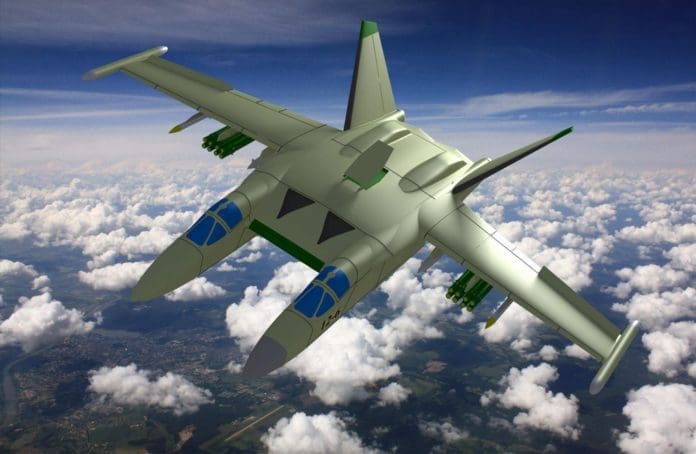From 'Doomsday CAS aircraft' to 'CAS aircraft of 90s'.
In 1984 Sukhoi has begun work on a new attack aircraft. The Ministry of Aviation Industry theme called Shturmovik-90 ("CAS aircraft of 90s") and was set in 1981 with promising programs "Fighter 90" and "; Bomber 90" And if promising fighter and bomber existed projected Western counterparts, the topic of "CAS aircraft of 90s "was absolutely original and Soviet designers were in absolutely uncharted path. New attack as attack "special period" was developed in the brigade 100-2 Sukhoi. work went from 1984 to 1992. The project was initiated personally by Mikhail Petrovich Simonov. In 1985, the leading topics on the T-12 was the EP Grunin. Supervised team Arnold I. Andrianov. leading designers were VV Sakharov, VA Pavel, D. Kibetz, AV Smirnov, I. Moskolenko and others. In the 2010s P.E.Gruninym been an extensive work on transferring the numerous sketches "special period aircraft" and Shturmovik-90 ("CAS aircraft of 90s") to computer renderings, I suggest you read this, I dare say, titanic work and touch a huge layer of the domestic aviation history. All images, computer graphics, tables used in this paper are the property of E.P.Grunin design bureau and published with permission, I allowed myself a little editing and streamlining the texts.
T-12-1 01. The unusual appearance of the aircraft was dictated solely by considerations of the layout, rather than the desire to use the ground effect as it may seem at first, and as mentioned in some publications devoted to W-90.
T-12-1 02. Initially, the plane was supposed to install a motor with variable ratio. While the idea of a multi-mode aircraft became widespread. Turbofan engines with variable bypass ratio ("two-pipe") was given the opportunity.
Turbofan engines with flat nozzles and variable bypass ratio created in the Rybinsk Motors KB, Chief Designer - P.A.Kolesov. The engine passed bench tests, different sources indicate thrust from 18,500 to 23,500 kg. Perhaps there is a different view of the modification. Strictly speaking, the project T-12 engine thrust is taken into 18500-19000 kg. at maximum thrust and 11,000 kg. on the denomination. KB "Dry" this engine was named "Trombone".
Few details about the two-pipe engine, all information taken from the internet.
Motor circuit:
"The principle of operation of such an engine is as follows. Main Module through a common intake air pumps. Under the maximum bypass all of the air introduced into the main module, where it is separated into two streams: one goes into the combustion chamber, the other bypasses it. To reduce power bypass open special valve for the first stage of the main air compressor and part is bypassed to the second module. Simultaneously, the outlet means closes the second circuit of the first module. Thus, both units begin to operate in THD mode single circuit providing the necessary thrust. "
In more detail, the upper engine 2 is contoured by-pass ratio that is greater than 1 turbofan. In this figure, the numeral 1 is not the compressor, but rather a fan. He stands not immediately upstream of the compressor as a turbofan, and moved forward a bit. When necessary, the top engine runs as Turbofan (turbofan), the lower the engine does not work at all, and the duct to it blocked. The fan blows air in upper engine, in this mode the minimum fuel consumption, thrust 9-11 tons.
To increase the thrust duct opens to lower the engine and it comes into operation. The fan blows air into the upper and lower motors. Lower engine unlike upper classic turbojet without a second circuit. In this engine the upper and is overlapped on the second circuit also becomes turbojet and turbofan not. In total we have two working THD with common inlet and a fan in it. Link to this mode can reach 19 tons.
It is believed that the name had Strut engine RD-179 or RD-179-300, but it did not become a serial and its title was transferred to the serial engine.
T-12-1 03. Planned to place weapons on the internal and external suspensions. It is the presence of internal compartments and original in layout engine led to a "two-headed" dvuhkabinnoy layout with center-developed. This arrangement was proposed directive aircraft directly chief designer KB "POSukhoi" MP Simonov. The author sketches notes that you should not just consider the types of weapons, it is only a sketchy approximation stowage compartments in.
Weapons bays in the "basic" T-12-1 and P 2 to the motor-179-300, intended for five or six. One or two central, 3.5 m long, 0.7 deep and 1.2 meters wide. This compartment (or compartments) can be divided into 2 parts, each 600 mm wide. On both sides of the central compartment is provided two further length of 5.4 meters. Their depth of 1.2 meters and a width of 700mm. For cabin crew compartment (each fuselage) length of 3.5 meters, a width of 0.7 m and a depth of 1.7 m There was an interesting idea to set at the bottom of the center-locator from the An-71. Antonov planes on deck did not hit, and the military all the time asking questions why they need a deck T-12, that's the idea appeared AWACS and anti-submarine aircraft. In this case, the engines of center-imposed, top and bottom (together with the center) put "lens" with locator. The idea of creating AWACS aircraft belonged E.P.Gruninu, but did not support the idea of Mikhail Simonov referring to the fact that excessive KB uploaded main job, and AWACS is just a headache, and that in any case, the Navy will take the T-12, they would have to go nowhere. Given that the work on the creation and AWACS aircraft Yakovlev KB and KB ASTC been rather difficult, we can understand the skepticism M.P.Simonova shown in this topic.
Aircraft project moved easily. When discussing the project with the military has repeatedly raised questions about the mass of the T-12. At sufficiently high thrust-weight ratio .65 - .7, - machine weight was more than 27 tons, and the maximum weight at all approaching 30 tons. Required thrust like a 3rd generation fighter, but here it was about attack aircraft. The weight of the payload reached 9 tons. In fact, the plane goes into the "weight category" tactical bomber Su-24.
Repeatedly in meetings with the military, Mikhail Simonov said that the plane on yourself wearing is not necessary, and if it (the plane) solves all problems specified TK, the weight does not matter. But the Ministry of Defence (Air Force in particular) were constantly talk about that project too heavy. In any case, the work on the T-12 did not stay and have developed several options for the design of the aircraft. When it became clear that the design engine will not Kolesov, it was decided to establish two types of engine AL-31, but without the afterburner. Overall thrust engines was 16 tons. Project T-12 bit "uzhali" in size, the weight of the aircraft became 24-26 tons, and the weight of the combat load was 7.2 tons. Considered and supersonic version of the T-12 with two reheat options AL-31F engine.
Also proposed a "lite" version of the aircraft with a single cabin crew. On this machine, installed two engines RD-33I (a thrust of 5500 kg) and the project had characteristics comparable to the Su-39 or Su-25T. Maximum takeoff weight was assumed in this case up to 23 tons, the weight of the load to 5.5 tons.
Project T-12 is being constantly modernized and evolved. If at first were only attempts to reduce the visibility, in the end was a major operation to reduce the visibility of that course in shaping projects executed under the theme of T-12. All projects are planned to be based not only on the ground but also on aircraft carriers. Several times it came to the release documentation and select different versions of the aircraft.
T-12-1 04.
T-12-1 05.
T-12-1 06.
T-12-1 07.
T-12-2 01. Second version was designed T-12 with "supercharged" air intake, because TsAGI specialists talked about a possible failure section inlet to the engine. Plainly the engine was not, so we were just guesses. And some of them came, organizing holes in the center section for air intake at high angles of attack.
T-12-2 02.
T-12-2 03.
T-12-2 04.
T-12-2 05.
T-12-2 06.
T-12-2 07.
T-12-6 01. Variant T-12-6. The main difference - it's smaller and newer type engines AL-31, in this case without afterburner. This embodiment has fewer and fewer internal compartments. Three of them - one central length of 5.4 meters, a depth of 1 m and 1.2 m wide, plus compartment for each cabin crew (in each fuselage) length of 3.5 meters, a width, and a depth of 7 m on 1.7 this embodiment, the aircraft provided for the installation of wheel-ski gear. Later, this version of the landing gear, has become one of the most sought after.
T-12-6 02.
T-12-6 03.
T-12-6 04.
T-12-6 05.
T-12-6 06.
T-12-6 07.
T-12-6 08.
T-12-6 09.
T-12-3 01. Versions 3 and 4 - these projects were considered as machines built using "stealth" technology. Both aircraft are based on the version of the T-12-6 engines AL-31. They have a new center section (sagittal) and the new cab. If earlier to save time and costs to build the T-12 was planned to use part of the Su-25 cockpit in particular, in versions 3 and 4 provided for the establishment of the original cabins.
T-12-3 02.
T-12-3 03.
T-12-3 04. In the sketch aircraft configuration with open compartments weapons landing gear and open sights stations.
T-12-3 05.
T-12-3 06.
T-12-3 07.
T-12-3 08.
T-12-4 01. The main difference between versions 3 and 4 - is the location of the chassis and weapons bays. In version 4 and one nasal rack is in the center of center. Center-in version 4 is elongated and has a greater sweep angle. Also available in 4, in the place where we were three versions of nose landing gear, arranged drums with 24 anti-tank "Whirlwind." The author sketches notes that the use of "Storms" It's late impact - during work existed only prikidochnye plans to use the revolving drums, and provides completely different types of missiles, in particular P-73. To serious work on the use of "rotor" is not reached.
T-12-4 02.
T-12-4 03.
T-12-4 04.
T-12-4 05.
T-12-4 06.
T-12-4 07.
T-12-4 08. T-12-4 with folded wings.
T-12-4 09. T-12-4 open compartments and issued revolver ATGM.
T-12-10 April. Revolving ATGM "Whirlwind."
It is worth noting that in his time on the forum paralay appeared quite extensive and nicely designed article about "Assault 90." For a long time it was the most complete and comprehensive material can be said on the subject. However, in KB E.P.Grunina pretty skeptical given in the paper materials, especially to the nomenclature of weapons and equipment, some of the technical specifications. Allegedly involved in the work of the people in the days of the project, few people cared about the exact composition of weapons and equipment. Quote: "The fact that the internal bays are planned, but there were problems, there is not an existing weapons included, and to engage new one without a kick in the ass, did not want to. Therefore plane was compartments were and weapons appeared in the mid-late 90, ie, after the close of the program. "Also cool attitude to the article and known aviation journalist Peter BUTOVSKAYA I've also asked for advice. However, I believe that with this article it is necessary to learn, though, would be to discover the world of the difficult and demanding, but incredibly fascinating work, which was at that time in the Soviet KB.
And we plan to continue this publication:
The Ministry of Defence is constantly discussed the issue of overweight developed "two-headed" T-12 gunship. Although Mikhail Simonov firmly defended the view of the need to design a large aircraft weighing up to 30 tons, rose more need to search for the feasibility of building a light car weighing 18-19 tons. That these figures often voiced at meetings with the military. Reducing weight by reducing the geometric dimensions of the T-12, is not very promising, although conducted and such work. Assumed version of the T-12 layout with two cabins, but with the RD-33 engines. In fact, at the beginning of the work, it was clear that this dead end. With this arrangement, the weight will still be 20 tons, and will be small compartments, and useless, because they still could not post anything. It was suggested several options for project T-12, but with one unit.

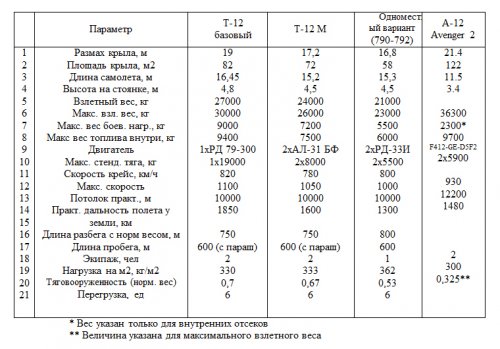
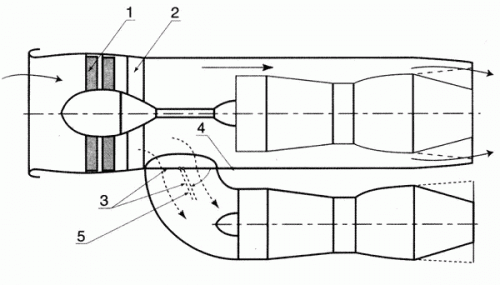
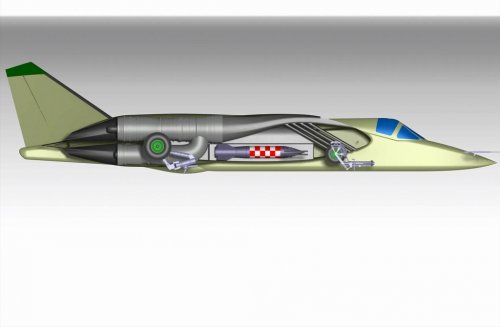
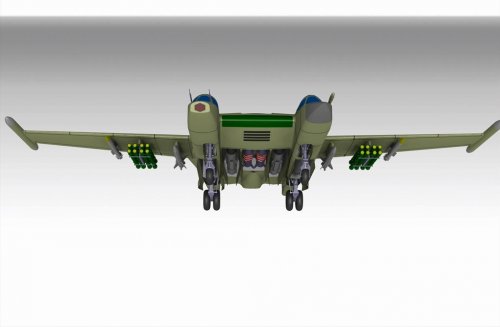
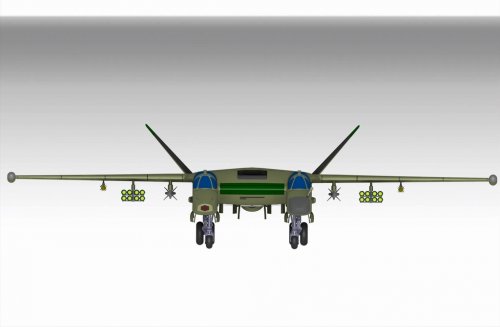
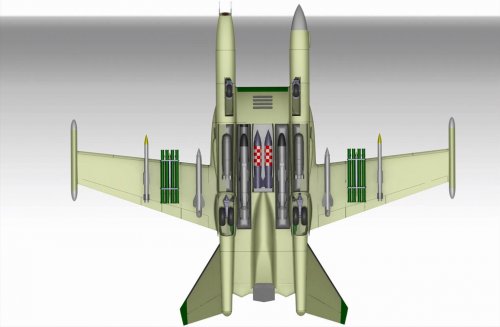
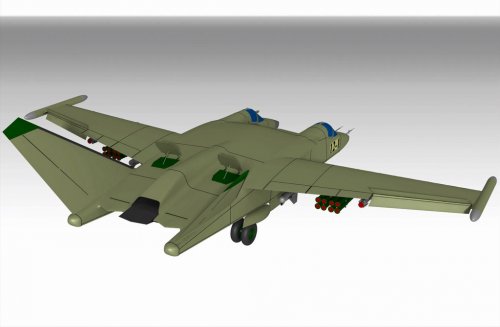
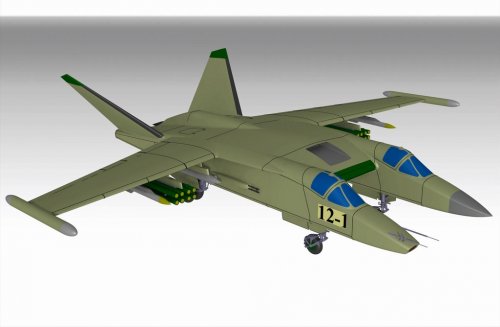
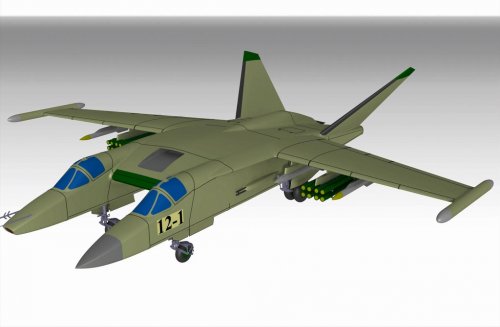
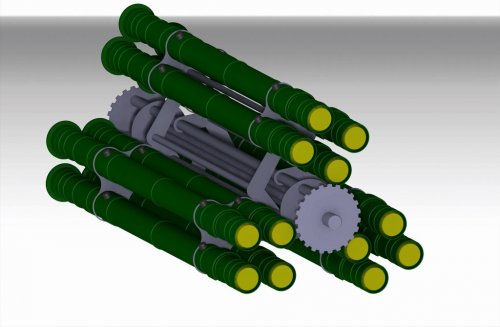
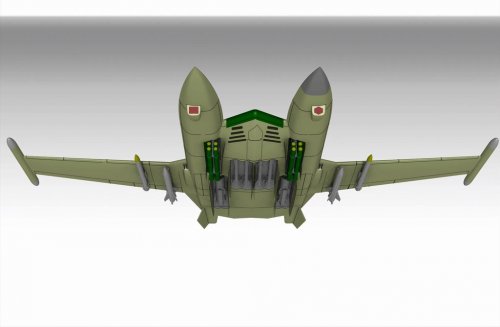
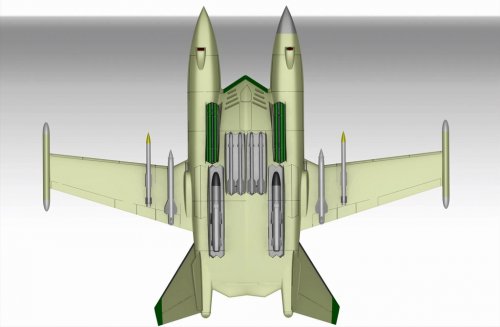
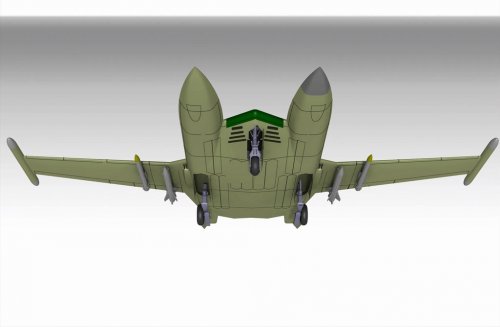
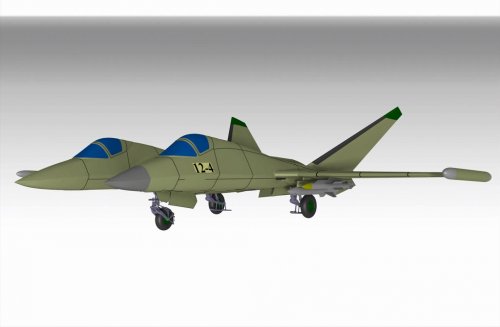
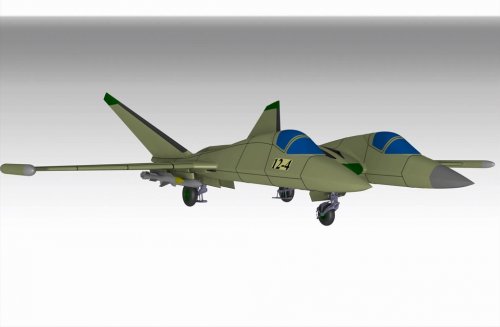
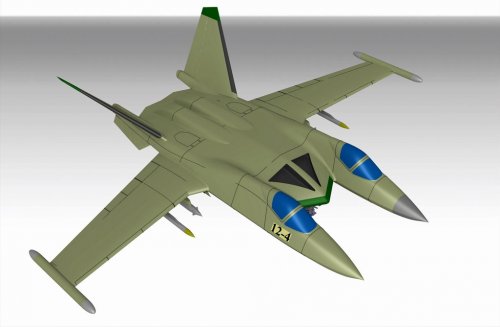
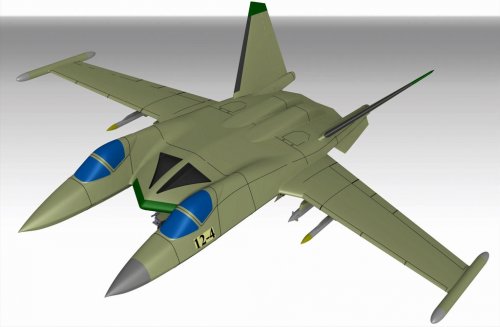
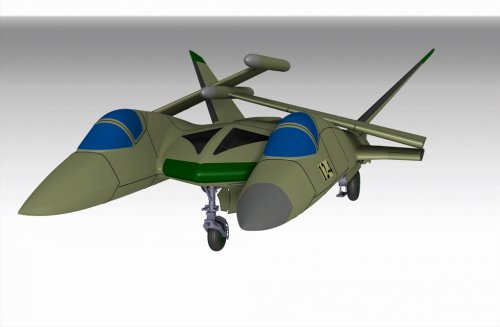
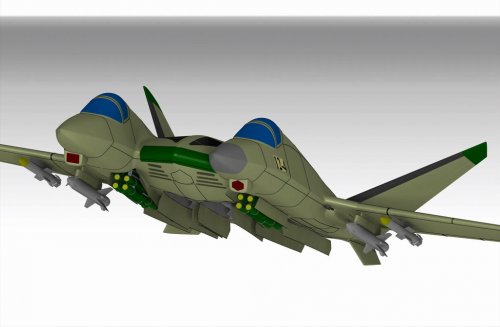

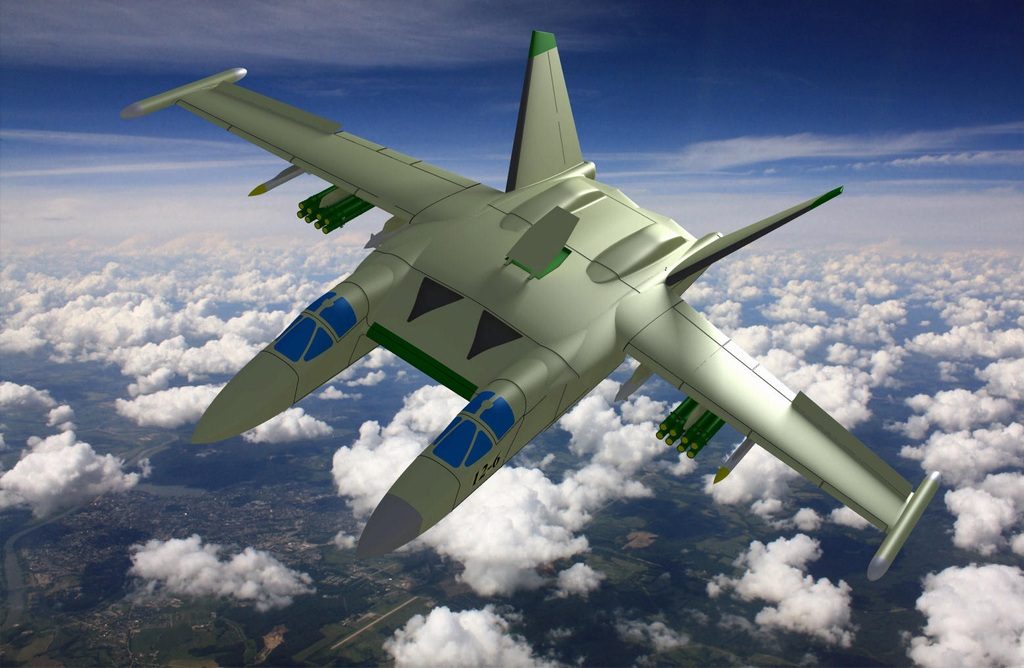
 www.zona-militar.com
www.zona-militar.com
